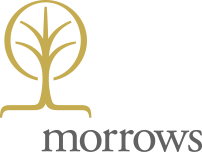Issue
Changes to APES 110 (the code) from 1 January 2020 and The Independence Standards (the standards) from May 2020, will require Accounting Firms to restructure their Superannuation model, resulting in significant financial impact.
Background
The Accounting Professional & Ethical Standards Board (APESB), in collaboration with the three professional accounting bodies (Chartered Accountants Australia and New Zealand (CAANZ), CPA Australia and the Institute of Public Accountants (IPA)), recently published a new and updated Independence Guide. The Guide incorporates the changes to the APES 110 Code of Ethics, which came into effect on 1 January 2020, and is mandatory for all auditors including those of SMSFs. This means it applies now – you may currently be in breach of the APES code in a court of law with all that might entail.
Problem
Many Accounting Firms work under a “Chinese wall” regime where the same firm prepares and audits the financial accounts. To be able to continue under this practice, accounting firms will be required to comply with the following changes to the codes and standards:
- A firm or Network Firm shall not assume a management responsibility for the Audit Client (para R600.7A)
- To avoid assuming a management responsibility, the firm must be satisfied that the SMSF Trustee(s) make all judgements and decisions that are the proper responsibility of management (para R600.8)
- A Firm or Network Firm shall not provide to an Audit Client that is not a Public Interest Entity, accounting or bookkeeping services including preparing financial statements on which the firm will express an opinion, unless:
- the services are of a routine or mechanical nature; and
- the firm addresses any threats that are not at an acceptable level (para 601.5A).
The exemption under routine or mechanical requires the trustees take responsibilities for all transactions and prepare a general ledger for the accountant. The ATO has stated that where the firm does not take on the responsibility, they would expect to see audit file evidence that the trustee is financially literate and has classified and valued all fund transactions. They may contact the trustees to test their knowledge and verify the preparation of any supporting documentation. Signed financial statements and trustee representation letters are insufficient.
The new Independence Guide has extended their existing list of breaches to independence, including:
- Firms that prepare the financial statements and audit the SMSF.
As the accountant prepared the financial statements and is also undertaking an audit of those financial statements there is a self-review threat that they will not evaluate the results of their judgements in preparing the financial statements when undertaking the audit. This applies even where separate divisions under different partners undertake the preparation of the financial accounts and the audit of those accounts. - Auditors who audit a SMSF where the auditor was previously a consultant/partner or employee of the firm. (A period of 2 years is required before engaging the former).
Threats may exist that the auditor may not appropriately evaluate the results of previous judgements made, or advice provided, to clients of the firm. Due to the previous relationship, there is a threat that the auditor may be too accepting of the work of the firm they previously worked at, particularly where minimum time has passed since the auditor was a partner/employee of the firm. - Relationships between auditors and the referral source including reciprocal auditing arrangements.
Where the firm’s fees are substantially increased by the referral source including reciprocal auditing arrangements, there is a threat that the auditor may be deterred from acting objectively because of the actual or perceived pressures from the referral source. - Referral sources in regional areas.
Auditors in regional areas may only want to accept audits from accountant firms they know. This would be a threat to independence and familiarity. They may be reluctant to issue an adverse finding for fear of losing this referral source. - Auditors contracting out accounting work where there is a close relationship between the contractor and the firm.
Where there is a strong relationship between the contractor and the auditing firm, threats to intimidation and familiarity would need to be overcome. - Long association with SMSF clients, 10+ years association presents self-interest and familiarity threats. Due to the long relationship with the client, there is a threat that the auditor will be too sympathetic to their interest.
- Firms that provide financial services to trustees.
There is a threat that the firm’s fees may be directly linked to the financial planning advice provided and may inappropriately influence the auditor’s judgement or behaviour. There is a threat that the auditor will not appropriately evaluate the results of the judgements or activities, such as financial planning advice provided, by another partner when the auditor is forming judgements in the audit.
The largest change is the In-house auditing arrangements which are now prohibited where the financial statements and audit are performed by the same firm. This includes where firms run practices in several states under the same branding but are independently owned.
ATO’s figures show that at least 200,000 SMSFs are serviced by firms that prepare the accounts and audit the fund.
How does this affect me?
The impact of engaging alternative audit arrangements will be significant and accounting firms will need to act now with the following issues in mind:
- Assessing the impact of loss audit income to the firm.
- Shift of risk profile by replacing relatively “clean” internal audits with unknown funds and accountant’s knowledge/thoroughness. The ATO is aggressively reviewing auditors.
- Allowing for increased time and cost for preparing the audit file for the new auditor including documents kept in a permanent file e.g. original unit trust and share registry paperwork, elections for pre 8/99 unit trusts; limited recourse loan documentation; details on related party issues.
- A fresh examination of Trust Deeds, they will require review from the new auditor.
- Updating your software to enable a smooth transition of audit evidence and work papers to new auditor.
- Allowing for the time lag to complete a fund and send to client as audit report will be outside your control, WIP management will be critical.
To prepare for the new regime we suggest you:
- Read APES 110 and the Independence Guide to familiarise yourself with the new requirements;
- Review your audit list to assess the audits you will be able to undertake;
- Look into finding an alternative auditor;
- Check your PI Insurance;
- Update all data feeds so that they may comply with “routine & mechanical”; and
- Increase you client base to reduce dependence on the single referral source.
The new Code and Guidelines are in operation this year, however the Tax Office has given 12 months for firms to restructure. They have indicated that more time may be given but expect everyone to comply within the 12 months.
Morrows can solve your independent issues by providing fast, reliable and cost effective SMSF audit services to the SMSF Accountants, SMSF Advisers and SMSF Trustees.
Morrows provides a fast turnaround – currently our turnaround time is less than 2 weeks for 80% of our funds.
We use an automated process which requires a minimal amount of paperwork. Information can be downloaded directly from your BGL and Class software into our audit program.
We have a large dedicated audit team and all audits are reviewed by our Director.
Morrows is happy to discuss your situation and help you to comply with APES 110 and the Independence Guide. Please feel free to get in contact with our team or call Maureen Allan on 03 9690 5700.





